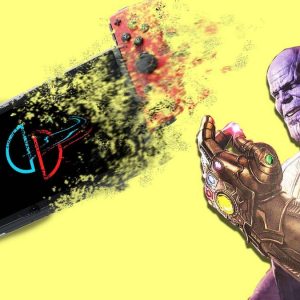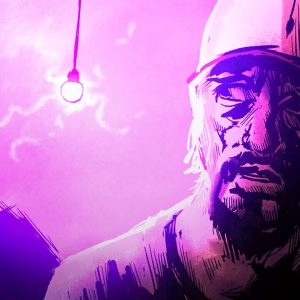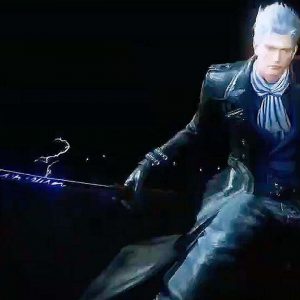[ad_1]
Learn about Super Mario Maker’s short but storied history from two of the game’s veteran players
When Super Mario Maker released on the Wii U in 2015, many fans joked that Nintendo never needed to make another 2D Mario again – that the fans would ecstatically make the next generation of 2D Mario for them.
While it is interesting to imagine a large developer letting its community take the reins on a major franchise, in Mario Maker that wasn’t necessarily the case. With the blocks finally in their own hands, Mario fans didn’t want to create traditional levels, and instead proceeded to create eclectic and amazing new challenges that Nintendo never envisioned (or did, and deemed too frightening for the average player.)
To learn how we got from the total chaos of Mario Maker’s early days to the fine-tuned levels you often see today, I spoke with two longtime Mario Maker community members to get their take on its short but storied history.
PangaeaPanga is a streamer, speedrunner, and creator of some of Super Mario Maker’s toughest courses, and his introduction to the Mario custom community came through a notorious early ROM hack (an edit of a game’s ROM files to create a customized version of the game). “I grew up primarily with the Mario franchise, and Super Mario World was my first video game.”
“
The genre’s guidelines are simple: break all the rules of ‘normal’ Mario”
“Browsing YouTube in 2006 I stumbled across a video titled ‘Asshole Mario’ which immediately caught my attention,” he said. “I realized that it was possible to create custom Mario levels, which was something I wanted to do ever since I was younger. As a result, I have been a part of the ROM hack community since 2007.” “Asshole Mario” introduced a new breed of Mario to the world, where solid ground was rare, enemies were abundant, and invisible blocks lurked in the airspace above almost every pixel perfect jump.
This level, developed by an unknown hacker named T. Takemoto, birthed the Kaizo genre (named after the hack’s original title, “Kaizo Mario World”) of custom Mario levels, and unintentionally inspired hundreds if not thousands of future builders. The genre’s guidelines are simple: break all the rules of “normal” Mario, and make it very hard. If you played any of the sadistic early Mario Maker levels, you are probably intimately familiar with these tenets, but even these levels served an important purpose in developing Mario Maker’s unique style. “Some big differences between the early “meta” of SMM level building and present-day levels is the amount of complexity that goes into levels nowadays. Back when Mario Maker first came out, levels were much simpler and easier to understand,” said Panga, looking back on the game’s early years. “But since then, there has been this stigma to outdo previous levels, whether that be through difficulty or entertainment value.”
Panga himself was a major contributor to this sort of ante-upping with his “Pit of Panga” series of levels, especially “P-Break” and “U-Break”, which were considered two of the hardest Mario Maker levels up to that point upon their release. Both levels make use of Mario Maker’s updated mechanics, particularly U-Break. “There are both advantages and disadvantages in the mechanics of SMM,” he said. “The main difference is that SMM feels a lot more “floaty” than normal Mario games.” While designing U-Break Panga wondered if mid-air shell-jumps were possible, decided to test it out, and found out they were.
A shell jump is a difficult technique where you drop an item, then immediately jump off of it while in the air. After the technique – which also works with springboards and P-Switches – was discovered, it became extremely popular among Kaizo developers. According to Panga, “Almost any Kaizo level will have one type of mid-air maneuver thrown in somewhere.”
Just as Kaizo Mario World attracted Panga to the game, U-Break was destined to attract new players. And that’s exactly how Thabeast721, another expert Mario Maker player, came across the game for the first time. “The first time I even heard of the game was early October 2015,” said Beast. I was browsing Reddit and saw a post titled something like ‘Hardest Mario Maker level beaten after 9 hours!’ The level was [ P-Break]. I thought ‘”Huh that looks like fun’. I’d like to play that.”
A veteran of the Guitar Hero high score community, it didn’t take long before Beast became known for beating some of SMM’s toughest levels. As an outsider coming in, he quickly noted the steady increase in level quality, propelled by creators like Panga, CarlSagan42, Val, and EvilWays. “It’s kind of crazy seeing the difference in a level from 2015 or even 2016 versus one made in 2017.As the game progressed, new tricks were discovered, both for executing a hard trick in a level and tricks to make levels more consistent and fun for the player.”
Advancements in tech (as well as patches that added exciting new items) lead to level design and mechanic complexity growing exponentially in a short time. In response, an entirely new tool was developed, one unique to Mario Maker: indicators. Similar to the color-coded environments in games like Mirror’s Edge and Uncharted, SMM’s indicators are visual cues that provide direction in the midst of an especially chaotic level. “It’s hard to say when these indicators showed up or who came up with them,” said Beast. “It is likely they were brought to mainstream attention from the weekly Blind Kaizo Races that are run on Fridays and Saturdays. These were some of the first kaizo levels to undergo strict testing before being presented to players, and they were some of the highest-quality hard levels in 2016.”
Simple indicators include floating letters (such as a “Z” which tells the player to spin jump), or a box with one open side (showing which direction the player should throw a held item), but there are many more that an advanced player needs to be aware of. Beast explains, “Three diagonal arrows in the shape of a triangle telling the player to do a midair shell jump, up arrow on top of a down arrow telling the player to airstall/ground pound cancel, two vertical rails next to each other means to let go of the d-pad/joystick, and a curved rail can mean the player should twirl.”
Even sounds can come into play, with some builders using the “oo, ah!” sound to indicate a triple jump, or a laugh to confirm that a mistake was made. “Before SMM, indicators were not really used in ROM hacks,” adds Panga, “Once people realized the value that indicators brought to levels, especially when playing for the first time, it made it easier to visualize what the creators of these levels are intending for the player to do.”
But indicators haven’t been the only exchange between the two communities. Years after ROM Hackers like Panga helped get the SMM community off the ground, bored players would take their talents to ROM Hacking, both as players and builders. “Surprisingly, most of us agree that SMM has caused extreme growth in the ROM hack community.” said Beast, being one of those crossover players himself. “The quality of Super Mario World hacks since the release of Mario Maker has just skyrocketed, as have the amount of people playing them. One of the most well-known creators of SMW hacks, BarbarousKing, started with Mario Maker. You can see how his level design in SMW is similar to his design in SMM,”
As for what they’d like to see in the sequel, Beast hopes to see more open level layouts. “Based off what has been seen in the trailer alone, we are all super excited. One thing that was hinted at in the trailer, but not specifically confirmed, is vertical levels,” he said. “As far as new things to build with goes, I think literally anything they add to the game will improve the game tremendously.” Panga, on the other hand keeps his answer simple: “Kaizo Mario 3D World and SLOPES.”
No matter what new items or mechanics Nintendo decides to add in Mario Maker 2, there’s no doubt these players will continue to take them and break them, pushing the boundaries of what Mario is capable of.
Sam Stewart is a freelance writer for IGN. Check out his previous piece on Ocarina of Time’s most obscure secrets. You can follow him on Twitter.
You can see Thabeast’s past Super Mario Maker highlights on his YouTube channel, or check out his livestream over at Twitch.tv/thabeast721.
Check out PangaeaPanga’s Youtube channel for a variety of Mario speedrun and custom level content, or go watch him create and play levels live over at Twitch.tv/PangaeaPanga.
[ad_2]
Source link























